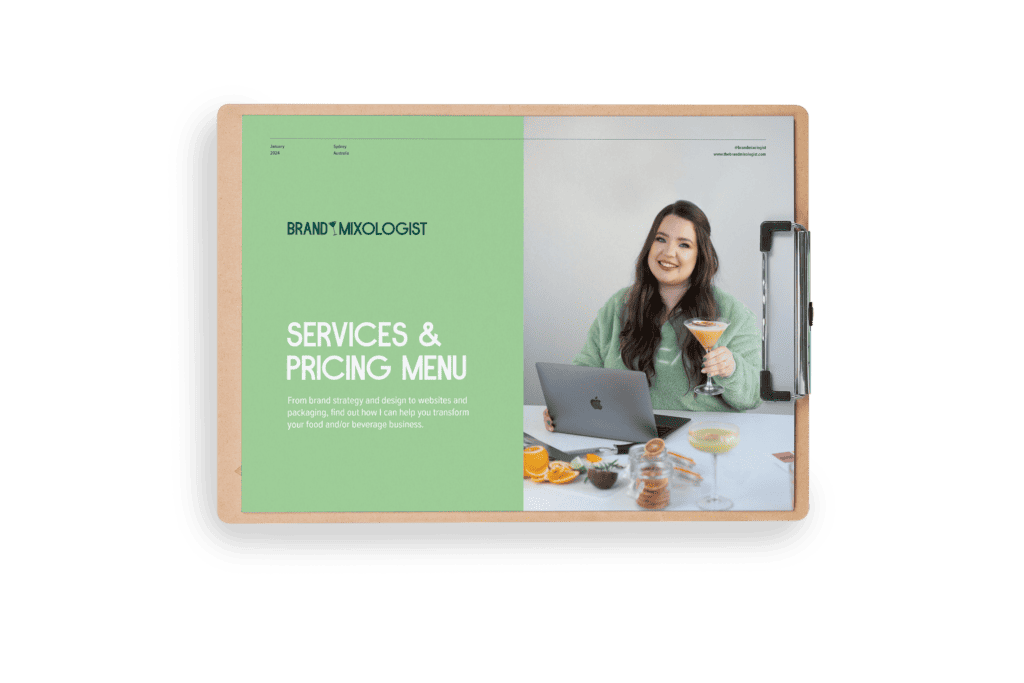Effective Food Branding
Food branding is the heart and soul of your business that can differentiate you from your competitors–irrespective of the size of your venture.
The food and beverage industry is highly competitive, with plenty of brands across the World. This is why standing out is crucial!
It is not just about offering delicious dishes or innovative products; it is also about crafting a brand identity based on strategy that will help your brand attract the right audience and connect with them in an emotionally level.
Effective food branding goes beyond just a logo and a pretty menu/packaging. It is about telling your story, evoking emotions, creating connections and a memorable experience for your customers. Effective food branding is the strategic process of creating a unique identity for a food product or brand that helps to stand out from competitors and create genuine connections with their target audience. The main goal of effective food branding is attract the right audience through strategic branding design.
What Should Effective Food Branding Include?
Brand Strategy
Is a researched and informed approach to building a brand with a focus on understanding your target audience and standing out in your industry. Having a strong brand strategy will allow you to find loyal customers who support and share your content and products. They’ll feel a connection and will champion your brand. There’s another benefit to brand strategy, you will understand your business better and will be able to make more informed decisions around your marketing and communications in a way that feels consistent and believable to your customers. This is the “secret” recipe of building a brand that is successful, memorable and recognisable
Brand Foundations
Every single business that starts has a core set of beliefs, purpose and mission. These are known as the brand foundations. Your brand needs a purpose, defining the “what”, “why” and “how” will be essential. Integrating your brand story into the foundation is the key. Here you need to also define your brand values which are the foundational beliefs and core values that your business believes in a stands for.
Target Audience
Identifying your correct target audience allows your business to focus marketing efforts on the groups that are most likely to buy from you. When you know who your main target audience is, you can focus on their needs, desires, and interests and help solve their problems. Knowing your audience can help guide the way you market, strategise, how the brand visually looks and so much more!
Competitor Analysis
Looking at competitors can help you learn the ins and outs of how your competition works, and identify possible opportunities where you can out-perform them. You can use the findings as a way to compare your company’s strengths and weaknesses relative to each competitor. Evaluate strengths, weaknesses, opportunities and threats.
Brand Personality & Voice
A brand personality refers to human characteristics and traits with the brand to which audience can relate to. Essentially what personality would the brand have if it was a person? A brand voice is the way you talk to your customers and is defined by your brand’s style of communication. There are many brand archetypes that will help your brand with its personality and voice.
These are the main “ingredients” to develop your brand strategy [recipe]. If you need help understanding these points let’s work together on your brand.

Brand strategy workbook
Download my short-workbook that will help you to uncover your brand purpose, brand vision and brand values.
Brand identity
A brand logo is a symbol, emblem, typographic, or the combination of all used by businesses to mark its brand’s identity. Having a unique logo helps your customers to identify & remember your product and quality of your brand. It’s important that your logo is responsive and can be used in a variety of different spaces. That’s why variations of your primary logo are necessary. A logo suite includes a primary logo, secondary logo, submark logo and/or logo mark.
– Primary logo: Used in most cases, it is the main signature of your brand so if it fits in the space, use it!. (Used on large displays, brochures, signage, websites, footers…)
– Secondary logo: It is designed to suit spaces where the primary logo doesn’t fit properly. (Used on letterheads, email signatures, social media banners, websites…)
– Submark logo: For when the primary logo doesn’t fit the required space. (Used on websites and printed material)
– Logo Mark: Very useful when the other variations don’t fit. (Used for social media profile pictures, stamps, favicon…)
Logo suite
Identifying your correct target audience allows your business to focus marketing efforts on the groups that are most likely to buy from you. When you know who your main target audience is, you can focus on their needs, desires, and interests and help solve their problems. Knowing your audience can help guide the way you market, strategise, how the brand visually looks and so much more!
Colour Palette
Creating a distinct and complimentary colour palette is going to be an important part of building brand recognition and will help with brand consistency. The use of the colour palette will not only reinforce the cohesiveness of the brand, but also serves a psychological purpose by communicating a certain feeling to our audience. Your colour palette will be used across your socials, stationery, website and so much more.
Typography
Using a set of consistent fonts for your business is going to be crucial because it sets the tone. Your fonts will be selected to pair perfectly with each other as well as your brand identity. Having different sets of fonts allows for the design to not be repetitive. By using consistent typography across your brand will make you recognisable and memorable.
Design assets & Illustrations
Illustrations & patterns are an exciting element to your brand. This is where you can bring in your brand personality and create a memorable brand experience. It’s also an effective way to build brand recognition that carries through your business’ physical presence, at every touch point, and helps you maintain cohesive branding.
Imagery & Photography
Following a certain photography style within your brand is going to help with showcasing your brand voice, whilst staying consistent. Having a certain style within your brand can be recognisable to your audience. This direction can be used on your website & social media platforms.


